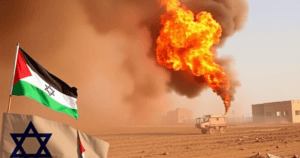Hamas Ceasefire Deal: 5 Hostages to Be Released Weekly – Major Breakthrough or Stalemate?
Hamas has agreed to a ceasefire proposal brokered by Egypt and Qatar, hoping for a breakthrough in the ongoing Gaza conflict. The plan includes the release of five Israeli hostages each week, but Israel has yet to fully accept it, instead submitting a counter-proposal in coordination with the United States. The ceasefire is structured in three phases, with the first phase having begun in January 2025, involving a temporary halt in fighting and prisoner exchanges. The second phase, which aims to secure the release of remaining hostages and withdraw Israeli troops from Gaza, remains a sticking point, as Hamas insists on its implementation while Israel seeks to extend phase one.
Despite diplomatic efforts, Israeli airstrikes and military operations continue in Gaza, with at least 20 Palestinians killed on Saturday alone. The Israeli army has also expanded ground activity in Rafah, pushing deeper into Palestinian territory. Meanwhile, Hamas remains firm in rejecting demands to disarm, stating that giving up its weapons is non-negotiable as long as Israeli occupation persists. The conflict has resulted in devastating casualties, with Palestinian officials reporting over 50,000 deaths since Israel launched its offensive in response to Hamas’ deadly October 7, 2023, attack, which killed 1,200 Israelis and led to 251 hostages being taken.

Hamas Ceasefire Deal: 5 Hostages to Be Released Weekly – Major Breakthrough or Stalemate?
Hamas, the Palestinian militant group governing Gaza, has announced its acceptance of a ceasefire proposal brokered by Egypt and Qatar. The decision was confirmed by senior Hamas leader Khalil al-Hayya in a televised statement, where he urged Israel to respect the agreement and avoid actions that could derail the peace process. The proposed deal, still pending Israel’s official approval, outlines a phased approach to ending hostilities, including the release of Israeli hostages held in Gaza.
Ceasefire Framework and Sticking Points
The ceasefire plan consists of three stages. The first phase, which reportedly began in January 2025, involved a temporary pause in fighting and an exchange of some Israeli hostages for Palestinian prisoners held in Israeli jails. While Hamas claims this phase is underway, Israel has not formally agreed to the terms. Instead, Israeli officials have submitted a counter-proposal, developed in coordination with the United States, to extend the initial phase rather than move immediately to the next stage.
The second phase focuses on negotiating the release of the remaining hostages and a full withdrawal of Israeli forces from Gaza. Hamas insists this stage must proceed without delay, framing it as critical to achieving lasting peace. However, Israel’s preference to prolong the first phase highlights ongoing disagreements over the timeline and conditions for ending the conflict.
Hamas Refuses to Disarm; Fighting Continues
A major obstacle to the ceasefire is Hamas’s refusal to lay down its weapons. The group has labeled its armed resistance a “red line,” arguing that disarming is off the table as long as Israel continues its occupation of Palestinian territories. This stance clashes with demands from Israel and the U.S., which view Hamas’s military capabilities as a threat to regional stability.
Meanwhile, violence persists on the ground. Israeli airstrikes and ground operations have intensified in recent days, particularly in southern Gaza’s Rafah region. On Saturday, local health authorities reported at least 20 Palestinian deaths in ongoing attacks. Israel’s military confirmed expanded operations in Rafah’s Jneina neighborhood, describing the move as a “security measure” aimed at targeting Hamas infrastructure.
Human Cost of the Conflict
The war, which erupted after Hamas-led fighters launched a surprise attack on southern Israel on October 7, 2023, has inflicted catastrophic losses. Palestinian officials estimate over 50,000 deaths in Gaza, many of them civilians, with widespread destruction of homes, hospitals, and critical infrastructure. In Israel, the initial Hamas assault killed approximately 1,200 people, mostly civilians, and resulted in 251 hostages being taken to Gaza.
The humanitarian crisis in Gaza has drawn global concern, with severe shortages of food, water, and medical supplies exacerbating suffering.
You must be logged in to post a comment.